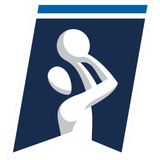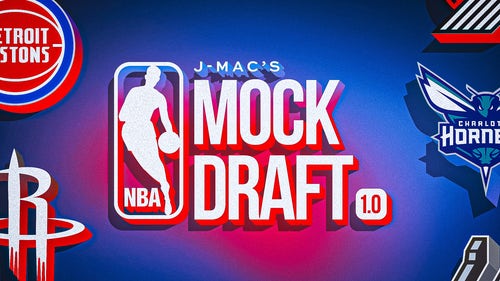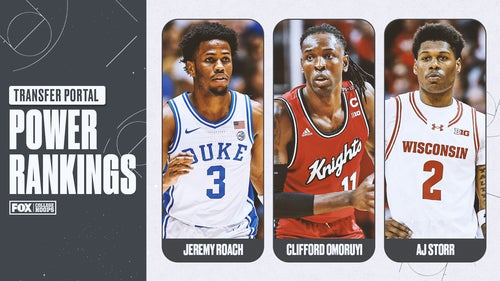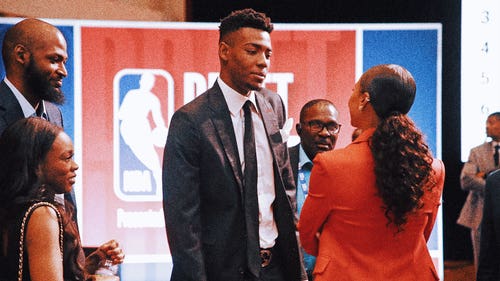
Five ways of evaluating coach of the year candidates
“Who should win Coach of the Year?” is reliably the most debatable topic in college basketball, mostly because the criteria are even more debatable than the résumés. There are conflicting philosophies that contend it should be a which-coach-has-the-best-team award, an overcoming-“adversity” award, an outperforming-expectations award, and so on. Whom you vote for is mostly determined by what you believe the rules are. Thus my February breakdown of the race is not a singular list, but Five Ways of Looking at Coach of the Year:
I. The Most Mainstream Approach: Blending Team Performance with Degree of Difficulty
1. Mark Few, Gonzaga. TV-panel debates over COY have tended tilt heavily toward Baylor’s Scott Drew and Arizona’s Sean Miller, but Few seems like the most logical candidate as we hit the homestretch. He lost two NBA frontcourt players (Domas Sabonis and Kyle Wiltjer) and two senior glue guys (Eric McClellan and Kyle Dranginis) from last year’s Sweet 16 team, and has managed to put out an even better product in 2016–17, ranking No. 1 in the polls, and in kenpom.com’s efficiency ratings, while remaining undefeated into February. Few seamlessly integrated three major-conference transfers (Nigel Williams-Goss, Jordan Mathews, Johnathan Williams) with pro aspirations into his rotation—that’s not always an easy thing to pull off, chemistry-wise—and they’re all playing at higher levels than they did at their previous destinations.
2. Scott Drew, Baylor. He lost two senior cornerstones (Taurean Prince, to the NBA draft, and Rico Gathers, to the NFL draft) and a starting point guard and somehow coached his team to a No. 1 ranking in early January after being left out of the preseason AP and coaches polls. The fact that the Bears are unlikely to dethrone Kansas in the Big 12 title race may hurt Drew’s candidacy a bit, but he has surprise success, big wins and player-development cred—most notably, the grooming of Johnathan Motley into a POY candidate—working in his favor.

3. Sean Miller, Arizona. Allonzo Trier was projected to be the Wildcats’ leading scorer, and an outside candidate for national POY; his 19-game suspension for use of a performance-enhancing drug would’ve derailed most teams, especially when combined with small forward Ray Smith’s season-ending knee injury in October. Miller reformulated his offense around 7-foot Finnish phenom Lauri Markkanen, went 17–2 before Trier was reinstated, and has his team tied with Oregon for the Pac-12 lead. All of that makes for a remarkable save.
4. Tony Bennett, Virginia. The Cavaliers’ season got off to an inauspicious start when projected leading scorer Austin Nichols was booted from the team after playing just one game. That, plus the fact that program cornerstone Malcolm Brogdon and frontcourt centerpiece Anthony Gill were gone from the ’15–16 squad, seemed to lower Virginia’s ceiling. Three months into ’16–17, the Hoos have been hurting so much that they . . . rank No. 2 nationally in efficiency and are in second place in the loaded ACC. Who saw that coming?
5. Jay Wright, Villanova. He’s been under-discussed in this race, most likely because he has Naismith/Wooden award frontrunner Josh Hart, Jalen Brunson and Kris Jenkins as his 1-2-3 options on offense. But Wright’s post-national-title success hasn’t been easy. Remember that he lost captains Ryan Arcidiacono and Daniel Ochefu, had projected frontcourt starter Omari Spellman ruled academically ineligible in the preseason, and lost starting combo guard Phil Booth to a knee injury—and has still coached the Wildcats to a No. 2 ranking in the AP poll.

II. Exceeding Preseason Projections
This is an analytic approach that compares a team’s current ranking in adjusted efficiency on kenpom.com with where they were ranked in SI’s preseason efficiency projections. I believe it’s the most effective way of measuring how much a coach has his team playing above the talent level he started with in the preseason—and this method has the benefit of IDing some outside-the-mainstream candidates.
Across all of Division I, three coaches have engineered 150-plus spot improvements over projections:
1. Grant McCasland, Arkansas State (Preseason Rank: 290, Current: 102—a +188 jump): The former Baylor assistant took over an ASU team that tied for second-to-last in the Sun Belt under John Brady in ’15–16, and due to some significant defensive improvements, now has the Red Wolves tied for first.
2. LeVelle Moton, North Carolina Central (Preseason Rank: 295, Current: 135—a +160 jump): His Eagles were sub-.500 in the MEAC last season and are now in first, with a backcourt duo in Patrick Cole and Dajuan Graf that could give a No. 1 seed a scare in the NCAAs.
3. Kyle Smith, San Francisco (Preseason Rank: 256, Current: 98—a +158 jump): Smith was an overachiever at Columbia who has quietly—I say that because Gonzaga and St. Mary’s gobble up all the WCC attention—improved the Dons in his debut season, in large part because he turned one of the nation’s worst defenses into a unit that now ranks 73rd in efficiency.
If we limit this pool to major-conference coaches only, there’s just one who’s engineered a 100-plus spot improvement over projections:
1. Josh Pastner, Georgia Tech (Preseason Rank: 204, Current: 79—a +125 jump): The former Memphis coach inherited a decimated roster that looked as if it would need a 2–3 year rebuild to have any kind of success in the ACC. Instead, Pastner has fashioned that roster into a top-10 defense in efficiency, with wins over VCU, North Carolina, Florida State and Notre Dame—and an outside shot of making the NCAA tournament.
III. Defying the Preseason Polls
This is the approach that measures success versus human expectations—specifically, the voting points a coach’s team received in the latest AP poll versus its voting points in the preseason poll from October. In this case, there are four coaches who have a gain of at least 700 AP voting points from the preseason:
1. Scott Drew, Baylor (Preseason votes: 0, Current: 1,255): I covered most of Drew’s case above, but not a single poll voter believed in the Bears in the preseason, and they’ve leapt to elite in a matter of months.
2. Mark Few, Gonzaga (Preseason votes: 699, Current: 1,619—a +920 gain): The Zags were 14th in the preseason AP poll, due to some natural skepticism of the loss of leading scorers Wiltjer and Sabonis. It was, obviously, less of a problem than voters expected.

3. Mick Cronin, Cincinnati (Preseason votes: 110, Current: 876—a +776 gain): He’s a candidate who’ll gain momentum if the Bearcats continue their undefeated run through the AAC. Despite losing anchors of his frontcourt (Octavius Ellis) and backcourt (Farad Cobb) from ’15–16, Cronin has made Cincy a stronger candidate to reach the second weekend of the NCAAs.
4. Leonard Hamilton, Florida State (Preseason votes: 88, Current: 839—a +751 gain): Kenpom.com has the Seminoles projected to finish in a three-way tie for the ACC regular-season title, at 13–5, which would be an amazing feat for a team that was third in the “others receiving votes” list of the preseason AP poll.

IV. The Most Significant Leaps
There’s an argument that the most impressive coaching achievement—since these awards are generally voted on in March, not April—is earning an at-large NCAA tournament bid with a team that wasn’t expected to make the dance. That’s a more significant leap for a program than merely moving up a few seed lines in the NCAA bracket. Judging by the latest forecasts, there are three coaches who are solidly on the verge of bracket breakthroughs:
1. Frank Martin, South Carolina. His Gamecocks earned zero preseason AP poll votes, and SI’s projections had them 77th, which was on the outside of the NIT bubble. Now, they look like a team that could earn a No. 4–6 seed in the NCAAs and win the SEC regular-season title—something that should earn Martin his conference’s COY award, as well as votes in the national race.
2. Chris Collins, Northwestern. If your COY criteria also includes a program’s historic ineptitude, then Collins might actually be your frontrunner, for getting the Wildcats on the verge of their first ever NCAA tournament bid. Northwestern wasn’t projected to be bad this season—SI had them 56th in the preseason, which made them the eighth-best team left out of the NCAA bracket—but their current trajectory puts them in line for a No. 6–7 seed and not even having to sweat on Selection Sunday.
3. Brad Underwood, Oklahoma State. His work at Stephen F. Austin—three NCAA tourney trips in three seasons, including an upset of West Virginia—proved he was a rising star, and he has the Cowboys overachieving in Year 1. They went 12–20 in Travis Ford’s final season and were naturally blanked in the preseason AP poll, but now have enough quality wins to look headed for an 8–9 seed if they finish .500 in the Big 12.
(Other candidates here who have a shot at the NCAAs, but are on less solid footing: Richard Pitino, Minnesota; Bruce Weber, Kansas State; Jamie Dixon, TCU)
V. The National Champ
Another way to settle Coach of the Year would simply be to wait until April 4. Then we’d know which coach achieved the season’s end goal—winning the national championship—and all subjectivity and criteria-wars would be removed from the process. But that might leave the sport with too few column topics, too much dead air, and make too much sense.










































































































































